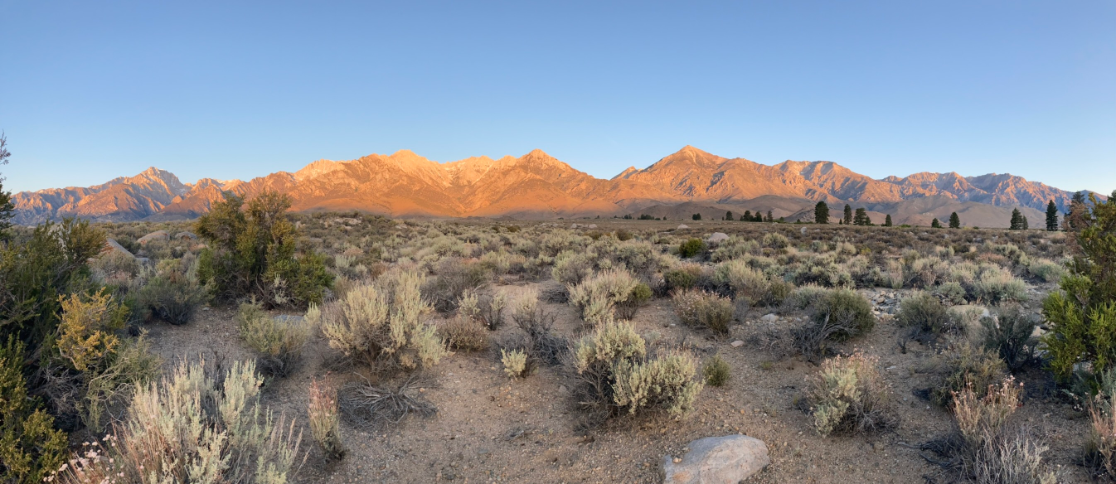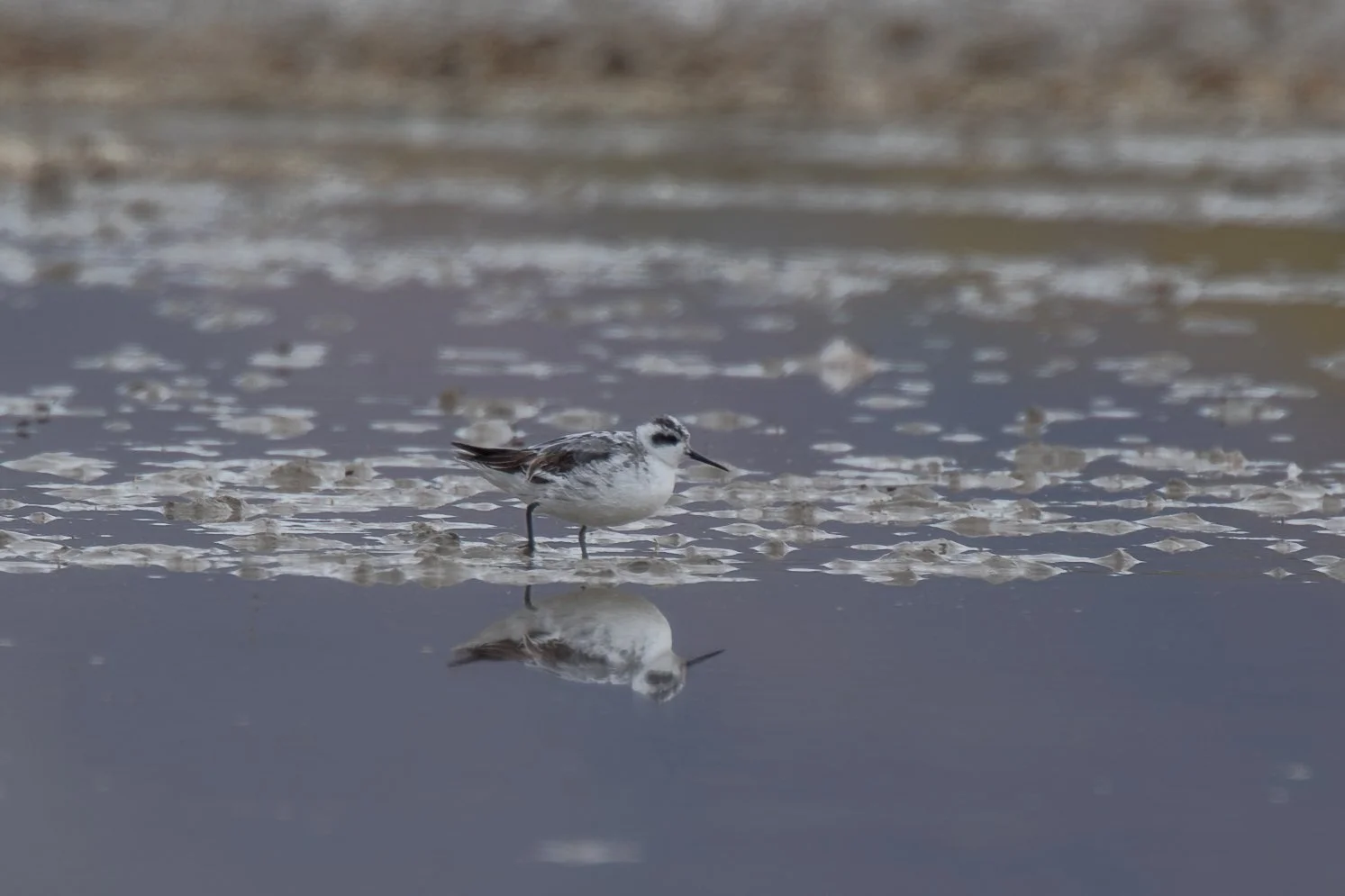Afterburn Campout: Birding with Burning Man (Birding Man?)
/by Ned Bohman
At the beginning of October, Great Basin Bird Observatory was invited to participate in Burning Man’s 2025 Afterburn Campout. This was a historic event at the Hualapai Flats, the site of the 1997 Burning Man event, and one of the few gatherings that has happened there since that time. Hualapai Flat is about 15 miles north of Gerlach, on the Fly Ranch property managed by Burning Man. I spent four days at the event and led two bird walks for the Great Basin Bird Observatory.
The weather certainly made things interesting, but we birded between the raindrops and enjoyed viewing a fresh dusting of snow on the Granite Range after the morning clouds cleared. Despite some of these challenges, the walks were well-received by those who attended. Burning Man’s Fly Ranch property is a spectacular oasis within the Great Basin Desert, adjacent to the famous Black Rock Playa. There are several large reservoirs with acres of wetland habitat. Groves of Russian olive, coyote willow, and Fremont cottonwood stipple the property and provide habitat for many species of wintering and migrating songbirds. The scenery is stunning, and those familiar with the area are probably aware of the gaudily-colored, not-quite-natural geyser that is constantly erupting next to a large hot pool.
Fly ranch geyser
Through my bird walks, attendees got to connect with many species of bird, including one very confiding Eared Grebe that appeared to enjoy soaking in the hot springs as much as the humans did. The grebe was enjoying a warm winter retreat and local cuisine—likely including the endemic Fly Ranch Pyrg snail, a species only found in springs at Fly Ranch. Don’t worry, snail populations are monitored, and local snail-ivores don’t seem to be having any negative effects!
There were several other species of water bird using the area, including migratory shorebirds like Red-necked Phalarope, Killdeer, American Avocet, and Western and Least Sandpipers. There were at least 10 species of ducks using various wetlands, including American Wigeon, Cinnamon and Green-winged Teal, Ring-necked Duck, Redhead, and Lesser Scaup. I saw my first low-elevation Dark-eyed Juncos of the season as well as American Pipits and dozens of White-crowned Sparrows, Yellow-rumped Warblers, and Ruby-crowned Kinglets freshly arrived for the winter. Western Meadowlarks and Bewick’s Wren were still singing, but most of the birds were silent or communicating with chip notes. Large flocks of Brewer’s and Red-winged Blackbirds were moving overhead, and large groups of Black-billed Magpie were forming as well.
Red-necked Phalarope
Everyone who came on the walks enjoyed learning what these birds were doing, and why they were here, now. While looking for sparrows and warblers in the Russian olives was a challenge for some, I was able to point out many songbirds to most participants. Large mammals didn’t disappoint either, a pair of very healthy-looking coyotes was hunting in the same Russian olive grove each morning. A 6-point mule deer buck was also enjoying the shelter of cottonwoods and willows adjacent to Hualapai Flat. Feral horses were fun for participants to see, even though they aren’t necessarily healthy additions to the local ecosystems. All in all, it was a fun weekend, with humans enjoying each other’s company as well as abundant wildlife sharing the oasis.
I want to extend a big thank you to the folks at Burning Man and Fly Ranch for having me along to share bird science with everyone!
Sunrise over Hualapai Flat
Individual Checklists:
Monday hot spring soak: https://ebird.org/checklist/S277556287 (So this was an unofficial bird walk, but there were birds! and people loved learning about them!)
Tuesday’s bird walk: https://ebird.org/checklist/S279241881
Saturday’s walk: https://ebird.org/checklist/S277555583
A few other stops on Saturday: https://ebird.org/checklist/S277555511
Mule Deer
Afterburn art






